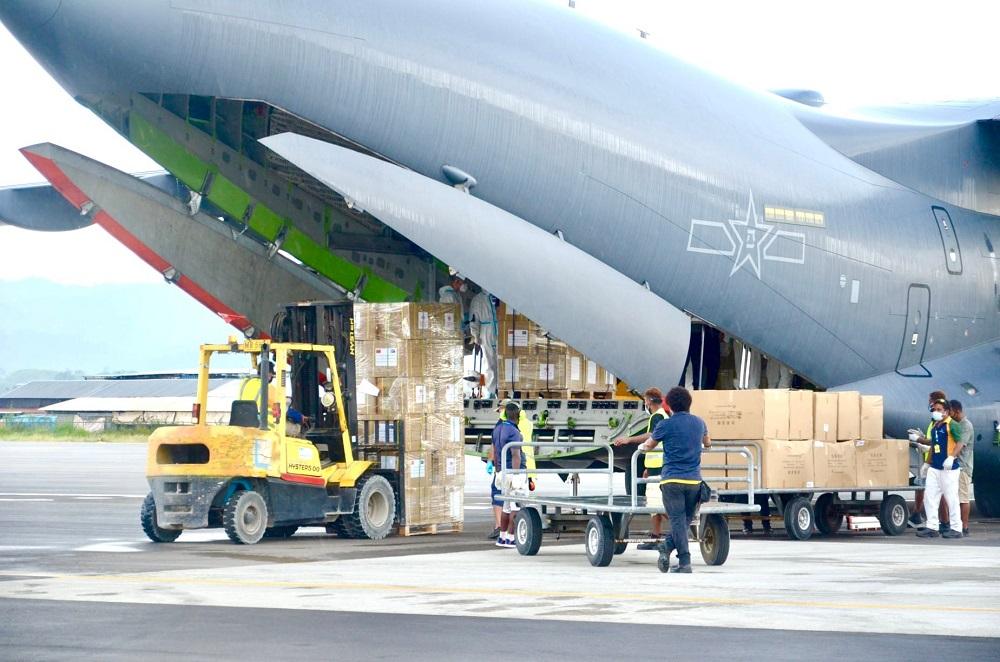
News that a draft security agreement between Solomon Islands and China may soon be formalised has raised concerns in Canberra that Beijing could use it to establish a military base on Australia’s northern doorstep.
If the agreement is approved by the Solomon Islands parliament, it could eventually allow China to establish a strategically placed military and paramilitary presence in the Pacific islands.
ASPI’s Michael Shoebridge notes that the key paragraph of the leaked draft agreement states that:
China may, according to its own needs and with the consent of the Solomon Islands, make ship visits to, carry out logistical replenishment in, and have stopover and transition in the Solomon Islands, and the relevant forces of China can be used to protect the safety of Chinese personnel and major projects in the Solomon Islands.
It appears that under the agreement China would have the right to deploy PLA Navy and Chinese Coast Guard vessels to Solomon Islands and have them replenished by Chinese forces stationed there. Those forces could also be used to protect Chinese major projects in the Solomons. This implies a permanent military or para-military presence requiring regular support from China. That could come via PLA Air Force cargo aircraft and PLA Navy vessels, and would require a logistics capability ashore and personnel to operate the port and manage air operations. That would be a significant presence, so how should Australia respond?
There’s a case for a two-track approach combining diplomacy and dialogue, alongside prudent defence planning. International security scholars Joanne Wallis and Anna Powles make a strong case that Australia has a path forward through dialogue and diplomacy.
The goal would be to ensure that the draft agreement isn’t passed through the Solomons parliament in the first place. Recognising that the legitimate security concerns of South Pacific states are different to Australia’s will require the next Australian government take the Pacific step-up to a new level.
ASPI’s Peter Jennings makes a convincing case for a more comprehensive approach to Pacific island security that is proactive rather than reactive. That would demand that Australia does more to address issues of concern to those states, such as climate change, in a meaningful way and more urgently, even as China shows indifference to this vital issue. It’s important that Australia step up to a higher level of statesmanship and really address the issues that challenge these much smaller nations.
It’s prudent to recognise that the agreement with China may be indeed be passed by the Solomons parliament. Expect China to then move swiftly to establish a forward military presence.
From Honiara to Brisbane is a little over 2,000 kilometres and, as Jennings notes, would be an ideal location for gathering signals intelligence and establishing an over-the-horizon radar system to monitor naval activity. It would also make sense for China to exploit deep waters offshore to lay undersea sonar arrays to monitor Australian, US and UK submarine activity out of Australia’s mooted east-coast nuclear submarine base.
From a forward military presence in Honiara, China would be better able to exert influence on other pacific island states, including Vanuatu, where it has already built a deep-water wharf in Espiritu Santo. A foothold in Honiara could allow China much greater presence and broader influence across the region.
In a time of conflict, a Chinese base in Solomon Islands could threaten sea lanes and open up Australia’s east coast to direct military threat for the first time since the end of World War II.
If such a facility is built, the case for strengthening Australian surveillance in the southwest Pacific would be very clear. The planned extension of the Jindalee Operational Radar Network is a first step that is already underway, but a more resilient approach to maritime surveillance into the Southwest Pacific would be needed in case of conflict. That could include both an expansion and an acceleration of space-based intelligence, surveillance and reconnaissance to incorporate ocean-surveillance satellites and provide an ability to track incoming cruise missiles, including hypersonic ones.
Greater maritime patrol and response capabilities, incorporating the P-8A Poseidon and the yet-to-be-delivered MQ-4C Triton and MQ-9B SkyGuardian drones, to monitor any Chinese naval operations in the southwest Pacific, would also be important.
Responding to an emerging threat to Australia’s eastern seaboard would demand a rethink of the Australian Defence Force’s overall posture. Whichever government is in power after the May election should pursue reviews of both defence capability and force posture, in ways that build on both the 2020 defence strategic update and 2020 force structure plan, as well as the AUKUS agreement. Our strategic environment is changing rapidly, so policy and capability acquisition must keep pace.